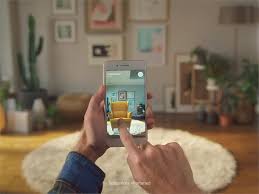AR is set to get a lot more focus in 2021, as technological advances, including new wearable devices, come to market, and push the development of digital overlays and tools to the next level.
And recently, TikTok took another step with its AR tools by adding a new LiDAR-enabled effect to ring in the New Year.
As you can see in this example, the new LiDAR technology responds to the real-world environment, so the glitter falls onto the couch, the floor, and the person within the frame. You’ll note that when he moves out of the scene, the glitter from his head and shoulders then falls away in his place. more
More specifically, LiDAR, which stands for ‘light detection and ranging’, measures how long it takes for light to reach an object and reflect back. That’s what enables the expanded depth-mapping, and will eventually facilitate the creation of new AR tools that can better interact and respond to real-world cues and objects.
The new frame is one of the first to use LiDAR, which has been built into the new iPhone 12 Pro but will eventually become more widely available over time. This specific effect was created by Garrett Fuselier, who previewed the effect on LinkedIn last week.
Snapchat has also announced that it will be looking to incorporate LiDAR enabled effects into its Lens Studio to enable creators to build their own Lenses utilizing LiDAR detection.
As noted, AR is set to gain significant momentum in 2021, based on usage trends before and throughout the pandemic, and tools like LiDAR will enable advanced object recognition and responsive options, which could have specific benefits in applications like eCommerce.
For example, IKEA launched its Place AR app back in 2019, which enables users to virtually try out different items to see what they’ll look like in their homes.
LiDAR will significantly advance the accuracy and display capacity of such tools, which will also relate to AR ‘Try on’ options and other digital testing tools that can help users better replicate the in-store experience when they shop online.
Projections already see AR ad revenues rising from $1.4b in 2020 to $8 billion in 2024.
Advances like LiDAR form a part of this puzzle, and you can expect to see a lot more new tools and options arriving throughout the year.
It’s definitely worth keeping in touch with this space – and if you have the time, you might even try creating your own effects in Lens Studio or Facebook’s Spark AR platform to get ahead of the game.

Thanks for sharing. I read many of your blog posts, cool, your blog is very good.